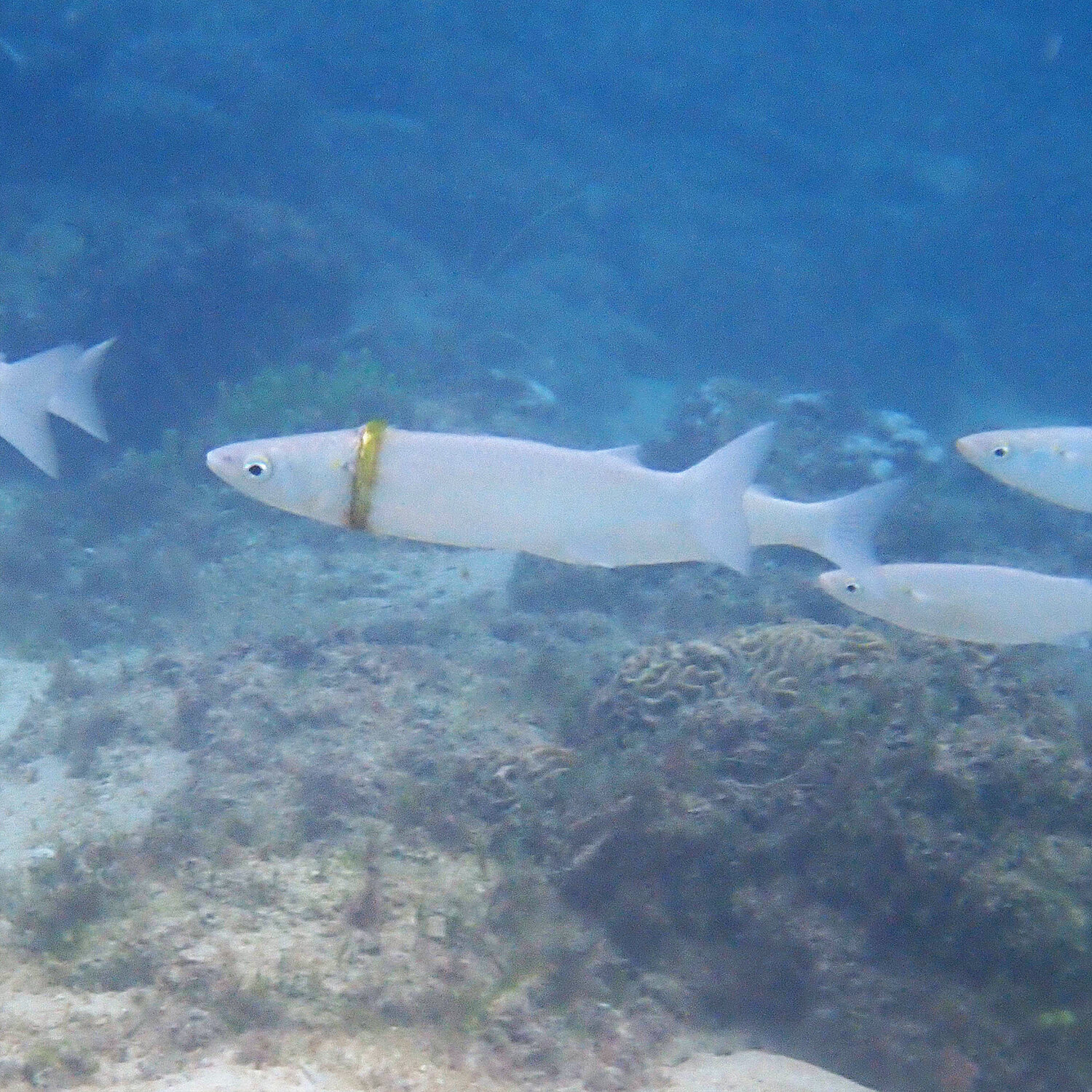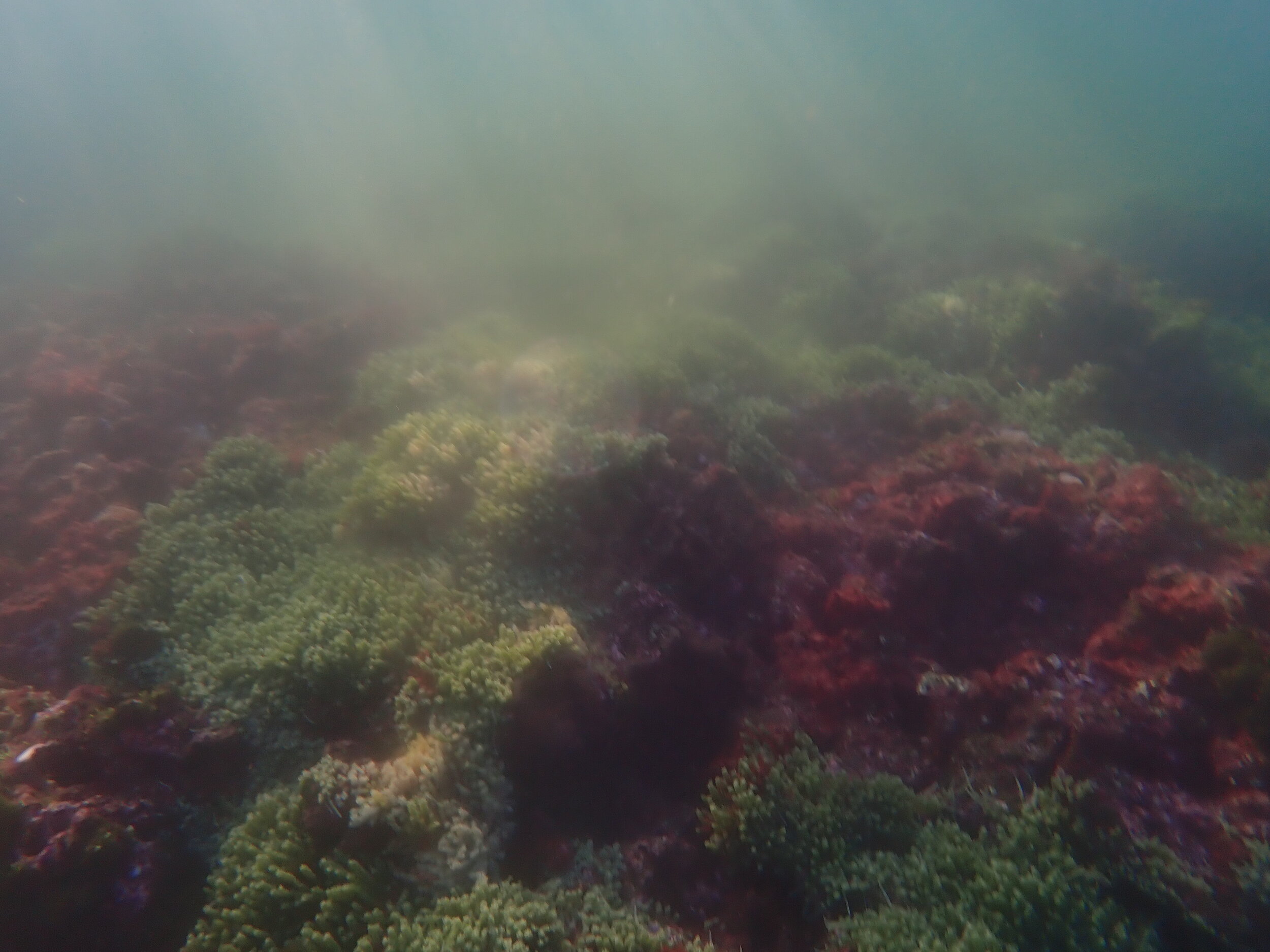Elegant wrasse - Anampses elegans (female)
On 22 April, for the first time, I saw a terminal phase elegant wrasse, Anampses elegans, inside the lagoon at the entrance to Emily Bay. Since then, I’ve noticed that the large, voracious schools of elegant wrasse, which swoop down to feed like a plague of locusts, have been breaking up into much smaller groups, with many of the larger female elegant wrasse now swimming on their own or in pairs.
This week, I’ve been able to add three new parrotfish species to the Reef Fish page of this website: Pacific Bullethead Parrotfish - Chlorurus spilurus; Palenose parrotfish - Scarus psittacus; Surf parrotfish - Scarus rivulatus. These are all species that I have only now seen for the first time.
A couple of weeks ago I photographed a sand mullet, Myxus elongatus, wearing a gold ring collar. The story travelled around the world. It is a shame there isn’t more fuss when these rings are plastic. Snip the rings!
Sand mullet with a gold wedding ring
Over the last couple of weeks, both in Slaughter and Emily Bays, I’ve noticed the black butterflyfish, Chaetodon flavirostris, congregating in groups of as many as six. Normally, these guys move around in pairs. Likewise, I’ve seen large groups of threadfin butterflyfish - Chaetodon auriga, as many as 12 together.
After heavy rain on 15 May, there was a dense algal bloom over the reef closest to the Salt House.





